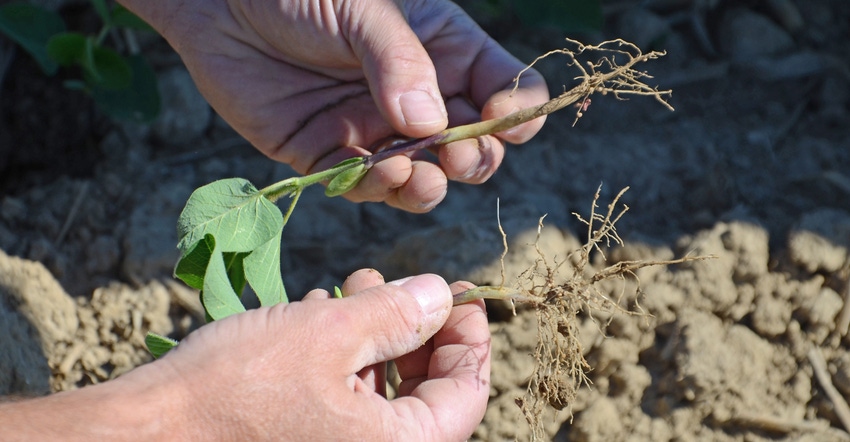
What do soybeans have going for them as a crop that corn does not? Even most 4-H’ers in the soybean project can answer this one. Soybeans host bacteria in nodules on their roots. This relationship gives them access to nitrogen they need to produce beans when everything works correctly. At current nitrogen prices, that’s a significant edge for soybeans.
Steve Gauck likes to see nodulation begin early in soybeans and continue as far into the season as possible.
“Good nodulation is one of the keys to targeting higher soybean yields,” says Gauck, Greensburg, Ind., a regional agronomy manager for Beck’s, sponsor of Soybean Watch ’22.
Gauck is monitoring the Soybean Watch field all year. One of the things he looks for from his very first visit until near harvest is how plentiful nodules are on roots and how well they’re performing. “It’s worth digging up a few plants occasionally to check,” he says.
Here are some common questions about nodulation. Gauck uses the Soybean Watch ’22 field as a backdrop to answer these questions:
How early do soybeans develop nodules on roots? We found them this year in the Soybean Watch field on V2 plants. That’s very encouraging. Sometimes it’s V3 or later before you find them. This field was planted on June 3-4 due to rain delays, and soils were warm. That leads to quicker nodulation than if soils are cool.
How can you tell if nodulation is occurring properly? The best way is to dig a few plants and examine roots. Large bumps on roots should be nodules. Rhizobium bacteria inside the nodules pull nitrogen from the air as they grow. The nitrogen is also available for the plant to use. It’s a symbiotic relationship — the plant hosts the bacteria, and the bacteria produce nitrogen that also helps the plant.
What clues tell you nodulation isn’t occurring as it should? In some years, soybeans tend to hit a wall at V3 or V4 and have a yellowish tint. That often happens more in cooler, wetter growing conditions. One possible cause is slow nodulation. Once nodules form and bacteria are at work, soybeans usually green up.
During the season, check the inside color of nodules. Healthy, functioning nodules should be pinkish on the inside, or at least have a pinkish tinge. That’s a sign that nitrogen is forming inside nodules.
What management practices promote better nodulation? I recommend planting about 1.5 inches deep. Slightly deeper than average planting usually helps promote better nodulation over time. The roots stay in slightly cooler soils deeper into the season. Slightly cooler temperatures tend to favor bacteria, which live inside the nodules on roots.
Would adding nitrogen starter help soybeans get off to a better start? Adding nitrogen for soybeans has been tried for decades, but the data I’ve seen doesn’t indicate much, if any, yield advantage. Soybeans whose roots nodulate properly should have all the nitrogen they need. In fact, adding nitrogen could make bacteria “lazy,” and nodules could develop more slowly. I don’t recommend adding nitrogen for soybeans, especially not early in the season.
About the Author(s)
You May Also Like




